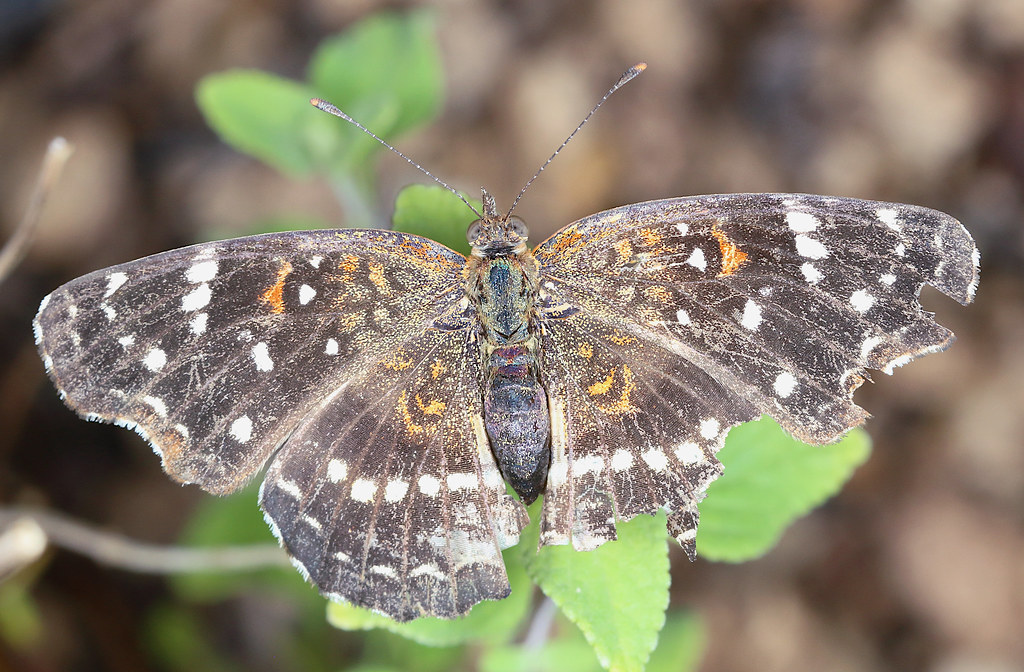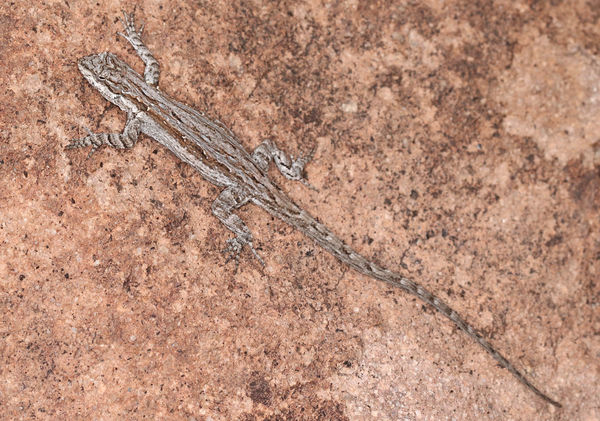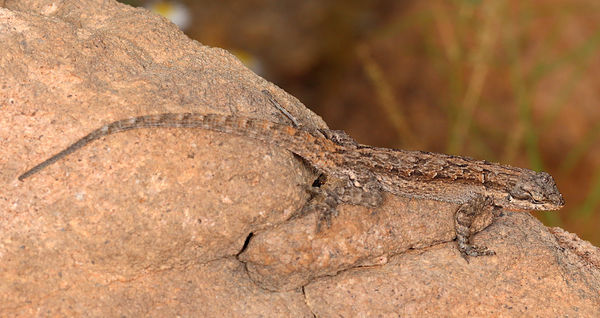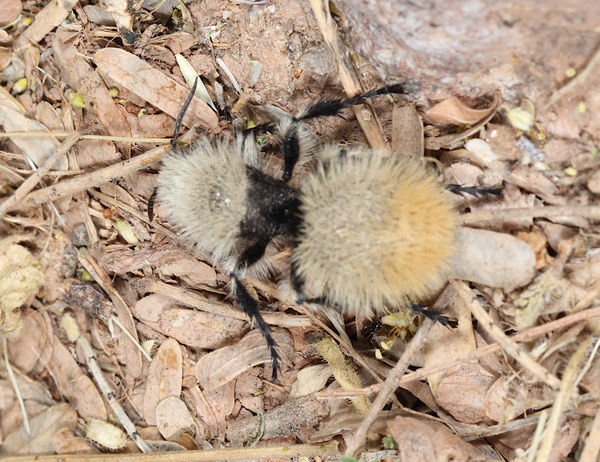Phoenix adventure: Day 1
Aug 10, 2019 01:43:06 #
Emerging all too slowly from the long winter, I was asked by a college textbook publisher if I would like to be flown out in April for an all expenses paid teaching conference in Phoenix, Arizona. Could I set the date to fly out several days early, where I paid for expenses over those extra days? Sure! People do that all the time! So of course I had to go! For several days I holed up in a cheap hotel, rented a cheap car, and carried the camera into various wilderness areas in the Phoenix area. The adventure starts out pretty humbly the first day since the first excursion had to be pretty short, but you shall see over the next several installments that I had a very good time in Phoenix!
During this first day it was already early afternoon by the time I was driving into wild country, and the light would be failing before long as the sun dipped below the mountains. I drove to the nearby Boyce Thompson Arboretum which is a large park area that combines the famous Sonoran desert habitat, with giant saguaro cacti and all that, and forest habitat. I am familiar with these environments after having lived in Arizona many years ago. Although it was very nice to drink it all in again, there was no time to sight-see. There were bugs to photograph!
I wanted desperately to find some scorpions (of course!), and so much precious time was spent turning over logs and lifting dead tree bark. I was not successful that day, but I did turn up several of these large darkling beetles (Eleodea sp.). The posture is so they can emit a noxious chemical defense, although I think this species is pretty harmless to humans.
 Darkling beetle by Mark Sturtevant, on Flickr
Darkling beetle by Mark Sturtevant, on Flickr
Next, I came across a lovely emperor butterfly on a wooden bridge. We have a similar species back home, but this one is the Texas hackberry emperor (Asterocampa celtis).
 Texas hackberry emperor by Mark Sturtevant, on Flickr
Texas hackberry emperor by Mark Sturtevant, on Flickr
This rather bedraggled butterfly is known as the Texan crescent (Anthanassa tulcis). I should have gotten pictures of more pristine ones (they were common), but I was being distracted by the many lizards that scurried with every move.
 Texan crescent by Mark Sturtevant, on Flickr
Texan crescent by Mark Sturtevant, on Flickr
The lizard shown in the next photo is a long-tailed brush lizard (Urosaurus graciosus), and the one after that I think is the ornate tree lizard (Urosaurus ornatus).
Finally, emerging from the forested area into the open Sonoran desert, I did see an enormous tarantula hawk (our largest wasp), but she would not land. However I did find this large white velvet ant (Dasymutilla sackenii). Velvet ants are actually parasitic wasps, and the females are wingless. This desert species is slightly larger than the famous ‘cow killer’ velvet ant, so I am sure that the sting would be similarly incapacitating. As is typical of her kind, she was on a constant run and so this picture was taken in great haste as she quickly disappeared into the abundant cholla cactus. I know from experience that cholla cactus is fearsomely protective and it should not be disturbed! And with that, it was time to find the motel and prepare for a full day.
During this first day it was already early afternoon by the time I was driving into wild country, and the light would be failing before long as the sun dipped below the mountains. I drove to the nearby Boyce Thompson Arboretum which is a large park area that combines the famous Sonoran desert habitat, with giant saguaro cacti and all that, and forest habitat. I am familiar with these environments after having lived in Arizona many years ago. Although it was very nice to drink it all in again, there was no time to sight-see. There were bugs to photograph!
I wanted desperately to find some scorpions (of course!), and so much precious time was spent turning over logs and lifting dead tree bark. I was not successful that day, but I did turn up several of these large darkling beetles (Eleodea sp.). The posture is so they can emit a noxious chemical defense, although I think this species is pretty harmless to humans.
 Darkling beetle by Mark Sturtevant, on Flickr
Darkling beetle by Mark Sturtevant, on FlickrNext, I came across a lovely emperor butterfly on a wooden bridge. We have a similar species back home, but this one is the Texas hackberry emperor (Asterocampa celtis).
 Texas hackberry emperor by Mark Sturtevant, on Flickr
Texas hackberry emperor by Mark Sturtevant, on FlickrThis rather bedraggled butterfly is known as the Texan crescent (Anthanassa tulcis). I should have gotten pictures of more pristine ones (they were common), but I was being distracted by the many lizards that scurried with every move.
 Texan crescent by Mark Sturtevant, on Flickr
Texan crescent by Mark Sturtevant, on FlickrThe lizard shown in the next photo is a long-tailed brush lizard (Urosaurus graciosus), and the one after that I think is the ornate tree lizard (Urosaurus ornatus).
Finally, emerging from the forested area into the open Sonoran desert, I did see an enormous tarantula hawk (our largest wasp), but she would not land. However I did find this large white velvet ant (Dasymutilla sackenii). Velvet ants are actually parasitic wasps, and the females are wingless. This desert species is slightly larger than the famous ‘cow killer’ velvet ant, so I am sure that the sting would be similarly incapacitating. As is typical of her kind, she was on a constant run and so this picture was taken in great haste as she quickly disappeared into the abundant cholla cactus. I know from experience that cholla cactus is fearsomely protective and it should not be disturbed! And with that, it was time to find the motel and prepare for a full day.
Aug 10, 2019 03:53:12 #
Aug 10, 2019 04:46:36 #
Mark Sturtevant wrote:
Emerging all too slowly from the long winter, I wa... (show quote)
I have to ask, what is the nature of your nature photographs of AZ for a textbook publisher? Meaning what subject is the textbook for?
Aug 10, 2019 06:01:16 #
I lived for a year in PHX and went on nature walks with a small group... vegetation was there in the dry... just small and hidden. I found PHX very interesting tho the sky was artificially colored blue and clear... when I got back home to Florida it was like I was wearing green-tinted glasses.... the sky was a lot grayer in Florida
Your "wildlife" photos are well done and as usual with close-ups, show us what we do not see by just looking. Thanks for sharing.
Your "wildlife" photos are well done and as usual with close-ups, show us what we do not see by just looking. Thanks for sharing.
Aug 10, 2019 08:59:54 #
Aug 10, 2019 09:04:53 #
lamiaceae wrote:
I have to ask, what is the nature of your nature photographs of AZ for a textbook publisher? Meaning what subject is the textbook for?
The textbook publisher wanted to have a group of us review newly developed online content that was in support for their textbook for college introductory biology. I also discovered these gatherings involved much beer drinking and eating of fantastic food. All paid for by the publisher. My pictures are just for fun, and these extra days I spent running around in the desert were on my own dime. However, the stipend the publisher gave for my time paid for most of my expenses during those extra days.
Aug 10, 2019 09:52:00 #
Aug 10, 2019 10:25:24 #
and as macro photographer, you made good use of your time, unlike many, on the small stuff, cause in that area...............you sweat for the small stuff, 

Aug 10, 2019 11:32:26 #
Aug 11, 2019 07:58:04 #
That sounded like a great 'jolly' with macro perks. An interesting post as always.
Aug 11, 2019 09:18:43 #
Great series expertly done. I always learn something from your narratives so thank you for taking the time to write them for they really mean a lot to me.
Aug 11, 2019 10:29:35 #
Mark Sturtevant wrote:
Emerging all too slowly from the long winter, I wa... (show quote)
Wow Mark that is a great set! I enjoyed hearing about your trip. Sounds like it was a good one. I just finished up a survey in Vermont. What a beautiful area. Fine work my friend.
-Doc
Aug 11, 2019 18:38:26 #
Mark Sturtevant wrote:
Emerging all too slowly from the long winter, I wa... (show quote)
Excellent photos and interesting narratives! Your post was greatly appreciated.
Aug 12, 2019 09:47:52 #
Aug 12, 2019 17:31:16 #
Great photos! I'm presently a bit south of you -- Benson. Just yesterday I shot a similar mutillid. Then, later, I found one with a dark abdomen, but didn't have my camera, durn!. (They are slightly smaller than the Cow Killers I remember from MD., but there are smaller species of both general kinds, too.) My lizard-of-the day was a Greater Earless L; a few days ago, one ran over and perched on my foot for a minute or so.
There are several teneb species that are Mullerian or Batesian mimics of each other, mosty just called Pinacate Beetles or Stink-bugs (obviously incorrectly). Many stand on their heads and ooze a brown, stinky tar, while another group lack the defense, but mimic the posture anyway. Grasshopper Mice jam the butt into the sand and eat them from the top down, stopping near the bottom, they don't care which type.
I found about a dozen Tarantula burrows around here, and teased some out with a grass straw. You might look for nearly perfectly round holes, quarter-size or a little smaller for juves, usually with a little webbing around the tube, sometimes with wispy-webbed tailings around the opening. Once you find one, others are easier.
For scorps, I'd suggest getting a UV flashlight, small and cheap on-line. They glow at night. Talked to a class in the desert once, and showed them. There were so many that several of the students decided not to sleep out, opting for car seats -- their loss! The desert is especially interesting at night!
There are several teneb species that are Mullerian or Batesian mimics of each other, mosty just called Pinacate Beetles or Stink-bugs (obviously incorrectly). Many stand on their heads and ooze a brown, stinky tar, while another group lack the defense, but mimic the posture anyway. Grasshopper Mice jam the butt into the sand and eat them from the top down, stopping near the bottom, they don't care which type.
I found about a dozen Tarantula burrows around here, and teased some out with a grass straw. You might look for nearly perfectly round holes, quarter-size or a little smaller for juves, usually with a little webbing around the tube, sometimes with wispy-webbed tailings around the opening. Once you find one, others are easier.
For scorps, I'd suggest getting a UV flashlight, small and cheap on-line. They glow at night. Talked to a class in the desert once, and showed them. There were so many that several of the students decided not to sleep out, opting for car seats -- their loss! The desert is especially interesting at night!
If you want to reply, then register here. Registration is free and your account is created instantly, so you can post right away.















